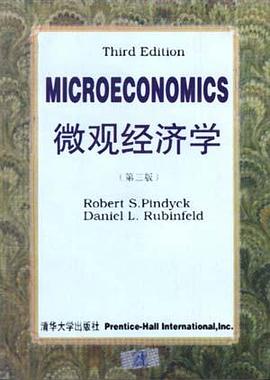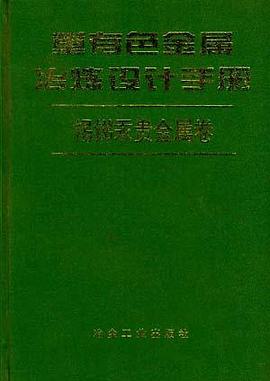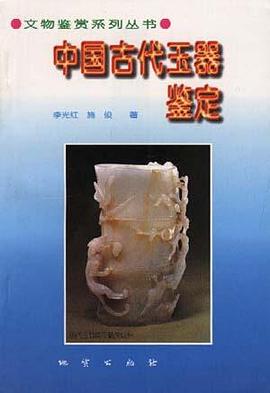Contents
PART 1 Introduction: Markets and Prices
1 PRELIMINARIES
1.1 The Use and Limitations of Microeconomic Theory
1.2 Positive Versus Normative Analysis
1.3 Why Study Microeconomics?
Corporate Decision Making: Ford Introduces the Taurus
Public Policy Design: Automobile Emission Standards
1.4 What Is a Market?
Competitive Versus Noncompetitive Markets
Market Price
The Extent of a Market
1.5 Real Versus Nominal Prices
2 THE BASICS OF SUPPLY AND DEMAND
2.1 The Market Mechanism
2.2 Shifts in Supply and Demand
2.3 Elasticities of Supply and Demand
2.4 Short-Run Versus Long-Run Elasticities
Demand
Supply
*2.5 Understanding and Predicting the Effects of Changing Market
Conditions
2.6 Effects of Government Intervention--Price Controls
PART 11 Producers, Consumers, and Competitive Markets
3 CONSCIMER BEHAVIOR
3.1 Consumer Preferences
Some Basic Assumptions
Indifference Curves
Ordinal Versus Cardinal Rankings
The Marginal Rate of Substitution
Perfect Substitutes and Perfect Complements 66
3.2 Budget Constraints
The Budget Line
The Effects of Changcs in Income and Prices 71
3.3 Consumer Choice
A Corner Solution
3.4 Revealed Preference
3.5 The Concept of Utility
Utility and Satisfaction
Marginal Utility
4 INDIVIDUAL AND MARKET DEMAND
4.1 Individual Demand
Price Changes
The Demand Curve
Income Changes
Engel Curves
Substitutes and Complements
4.2 Income and Substitution Effects
Substitution Effect
Income Effect
A Special Case-The Giffen Good
4.3 Market Demand
from Individual to Market Demand
Point and Arc Elasticities of Demand
4.4 Consumer Surplus
4.5 Network Externalities
The Bandwagon Effect
The Snob Effect
*4.6 Empirical Estimation of Demand
Interview and Experimental Approaches to Demand Determination
The Statistical Approach to Denund Estimation
The Form of the Demand Relationship
Appendix to 4 Demand Theory-A Mathematical Treatment
Utility Maximization
The Consumer's Optimum
Marginal Rate of Substitution
An Example
Marginal Utility of Income
Duality in Consumer Theory
Income and Substitution Effects
5 CHOICE CINDER CJNCERTAINTY
5.1 Describing Risk
Probability
Expected Value
Variability
Decision Making
5.2 Preferences Toward Risk
Different Preferences Toward Risk
5.3 Reducing Risk
Diversification
Insurance
The Value of Information 154
*5.4 The Demand for Risky Assets
Assets
Asset Returns
The Trade-off Between Risk and Return
The Investor's Choice Problem
6 PRODUCTION
6.1 The Technology of Production
6.2 Isoquants 168
The Short Run Versus the Long Run
6.3 Production with One Variable Input (Labor;
Average and Marginal Products
The Law of Diminishing Returns
Labor Productivity
6.4 Production with Two Variable Inpurs
Diminishing Returns
Substitution Among Inputs
Production Functions-Two Special Cases
6.5 Returns to Scale
7 THE COST OF PRODCICTION
7.1 Measuring Cost: Which Costs Matter?
Economic Cost Versus Accounting Cost
Sunk Costs
7.2 Cost in the Short Run
The Determinants of Short-Run Cost
The Shapes of the Cost Curves
7.3 Costs in the Long Run
The Cost-Minimizing Input Choice
The Isocost Line
Choosing Inputs
Cost Minimization with Varying Output Levels
7.4 Long-Run Versus Short-Run Cost Curves
The Inflexibility of Short-Run Production
Long-Run Average Cost
Economies and Diseconomies of Scale
The Relationship Between Short-Run and Long-Run Cost
7.5 Production with Two Outputs--Economies of Scope
*7.6 Dynamic Changes in Costs---The Learning Curve
*7.7 Estimating and Predicting Cost
Cost Functions and the Measurement of Scale Economies
Appendix to 7 Production and Cost Theory--A Mathematical
Treatment
Cost Minimization
Marginal Rate of Technical Substitution
Duality in Production and Cost Theory
The Cobb-Douglas Cost and Production Punctions
8 PROFIT MAXIMIZATION AND COMPETITIVE SUPPLY
8.1 Profit Maximization
Do Firms Maximize Profit?
8.2 Marginal Revenue, Marginal Cost, and Profit Maximization
Demand and Marginal Revenue for a Competitive Firm
Profit Maximization by a Competitive Firm
8.3 Choosing Output in the Short Run
Short-Run Profit Maximization by a Competitive Firm
The Short-Run Profitability of a Competitive Firm
8.4 The Competitive Firm's Short-Run Supply Curve
The Firm's Response to an Input Price Change
8.5 The Short-Run Market Supply Curve
Elasticity of Market Supply
Producer Surplus in the Short Run
8.6 Choosing Output in the Long Run
Zero Profit
Long-Run Competitive Equilibrium
Economic Rent
Producer Surplus in the Long Run
8.7 The Industry's Long-Run Supply Curve
Constant-Cost Industry
Increasing-Cost Industry
Decreasing-Cost Industry
The Short-Run and Long-Run Effects of a Tax
Long-Run Elasticity of Supply
8.8 When Is a Market Perfectly Competitive?
Contestable Markets
9 THE ANALYSIS OF COMPETITIVE MARKETS
9.1 Evaluating the Gains and Losses from Government Policies-Consumer
and Producer Surplus
Review of Consumer and Producer Surplus
Application of Consumer and Producer Surplus
9.2 The Efficiency of a Competitive Market
9.3 Minimum Prices
9.4 Price Supports and Production Quotas
Price Supports
Production Quotas
9.5 Import Quotas and Tariffs
9.6 The Impact of a Tax or Subsidy
PART III Market Structure and Competitive Strategy
10 MARKET POWER: MONOPOLY AND MONOPSONY
10.1 Monopoly
Average Revenue and Marginal Revenue
The Monopolist's Output Decision
An Example
A Rule of Thumbfor Pricing
Shifts in Demand
The Effect of a Tax
*The Multiplant Firm
10.2 Monopoly Power
Measuring Monopoly Power
The Rule of Thumb for Pricing
10.3 Sources of Monopoly Power
The Elasticity of Market Demand
The Number of Firms
The Interaction Among Firms
10.4 The Social Costs of Monopoly Power
Price Regulation
Regulation in Practice
10.5 Monopsony
Monopsony and Monopoly Compared
10.6 Monopsony Power
Sources of Monopsony Power
The Social Costs of Monopsony Power
Bilateral Monopoly
10.7 Limiting Market Power: The Antitrust Laws
Enforcement of the Antitrust Laws
11 PRICING WITH MARKET POWER
11.1 Capturing Consumer Surplus
11.2 Price Discrimination
First-Degree Price Discrimination
Second-Degree Price Discrimination
Third-Degree Price Discrimination
11.3 Intertemporal Price Discrimination and Peak-Load Pricing
11.4 The Two-Part Tariff
ll.5 Bundling
Mixed Bundling
Tying
11.6 Advertising
A Rule of Thumb for Advertising
Appendix to ll-Transfer Pricing in the Integrated Firm
Transfer Pricing When There Is No Outside Market
Transfer Pricing with a Competitive Outside Market
Transfer Pricing with a Noncompetitive Outside Market
A Numerical Example
12 MONOPOLISTIC COMPETITION AND OLIGOPOLY
12.1 Monopolistic Competition
The Makings of Monopolistic Competition
Ecquilibrium in the Short Run and the Long Run
Monopolistic Competition and Economic Efficiency
12.2 Oligopoly
Equilibrium in an Oligopolistic Market
The Cournot Model
Example: A Linear Demand Curve
12.3 First Mover Advantage-The Stackelberg Model
12.4 Price Competition
Price Competition with Homogeneous Products-The Bertrand Model
Price Competition with Differentiated Products
12.5 Competition Versus Collusion: The Prisoners' Dilemma
12.6 Implications of the Prisoners' Dilemma for Oligopolistic Pricing
Price Rigidity
Price Signaling and Price Leadership
The Dominant Firm Model
12.7 Cartels
The Analysis of Cartel Pricing
GAME THEORY AND COMPETITIVE STRATEGY
13.1 Gaming and Strategic Decisions
Noncooperative Versus Cooperative Games
13.2 Dominant Strategies
13.3 The Nash Equilibrium Revisited
Maximin Strategies
*Mixcd Strategies
13.4 Repeated Games
13.5 SequentialGames
The Extensive Form of a Game
The Advantage of Moving First
13.6 Threats, Commitments, and Credibility
Empty Threats
Commitment and Credibility
13.7 Entry Deterrence
Strategic Trade Policy and International Competition
13.8 Bargaining Strategy
14 MARKETS FOR FACTOR INPUTS
14.1 Competitive Factor Markets
Demand for a Factor Input When Only One Input Is Variable
Demand for a Factor Input When Several Inputs Are Variable
The Market Demand Curve
The Supply of Inputs to a Firm
The Market Supply of Inputs
14.2 Equilibrium in a Competitive Factor Market
Economic Rent
14.3 Factor Markets with Monopsony Power
Marginal and Average Expenditure
The Input Purchasing Decision of the Firm
14.4 Factor Markets with Monopoly Power
Monopoly Power over the Wage Rate
A Two-Sector Model of Labor Employment
Bilateral Monopoly in the Labor Market
15 INVESTMENT, TIME, AND CAPITAL MARKETS
15.1 Stocks Versus Flows
15.2 Present Discounted Value
Valuing Payment Streams
15.3 The Value of a Bond
Perpetuities
The Effective Yield on a Bond
15.4 The Net Present Value Criterion for Capital Investment Decisions
The Electric Motor Factory
Real Versus Nominal Discount Rates
Negative Future Cash Flows
15.5 Adjustments for Risk
Diversifiable Versus Nondiversifiable Risk
The Capital Asset Pricing Model
15.6 Investment Decisions by Consumers
15.7 Intertemporal Production Decisions-Depletable Resources
The Production Decision of an Individual Resource Producer
The Behauior of Market Price
User Cost
Resource Production by a Monopolist
15.8 How Are Interest Rates Determined?
A Variety of Interest Rates
PART IV Information, Market Failure, and the Role ofGovernment
16 GENERAL EQUILIBRIUM AND ECONOMIC EFFICIENCY
16.1 General Equilibrium Analysis
Two Interdependent Markets-Moving to General Equilibrium
The Attainment of General Equilibrium
16.2 Efficiency in Exchange
The Advantages of Trade
The Edgeworth Box Diagram
Efficient Allocations
The Contract Curve
Consumer Equilibrium in a Competitive Market
16.3 Equity and Efficiency
The Utility Possibilities Frontier
Equity and Perfect Competition
16.4 Efficiency in Production
Production in the Edgeworth Box
Input Efficiency
Producer Equilibrium in a Competitive Input Market
The Production Possibilities Frontier
Output Efficiency
Efficiency in Output Markets
16.5 The Gains from Free Trade
Comparative Advantage
An Expanded Production Possibilities Frontier
16.6 An Overview-The Efficiency of Competitive Markets
16.7 Why Markets Fail
Market Power
Incomplete Information
Externalities
Public Goods
17 MARKETS WITH ASYMMETRIC INFORMATION
17.1 Quality Uncertainty and the Market for "Lemons"
The Market for Used Cars
Implications of Asymmetric Information
Insurdnce
The Market for Credit
The Importance of Reputation and Standardization
17.2 Market Signaling
A Simple Model of Job Market Signaling
- Guarantees and Warranties
17.3 Moral Hazard
17.4 The Principal-Agent Problem
The Principal-Agent Problem in Private Enterprises
The Principal-Agent Problem in Public Enterprises
Incentives in the Principal-Agent Framework
17.5 Managerial Incentives in an Integrated Firm
Asymmetric Information and Incentive Design in the Integrated Firm
Applications 616
17.6 Asymmetric Information in Labor Markets: Efficiency Wage Theory
18 EXTERNALITIES AND PUBLIC QOODS
18.1 Externalities
Negative Externalities and Inefficiency
Positive Externalities and Inefficiency
18.2 Ways of Correcting Market Failure
An Emissions Standard
An Emissions Fee
Standards Versus Fees
Transferable Emissions Permits
Recycling
18.3 Externalities and Property Rights
Property Rights
Bargaining and Economic Efficiency
Costly Bargaining-The Role of Strategic Behavior
A Legal Solution-Suiing for Damages
18.4 Common Property Resources
18.5 PublicGoods
Efficiency and Public Goods
Public Goods and Market Failure
18.6 Private Preferences for Public Goods
APPENDIX THE BASICS OF REGRESSION
An Example
Estimation
Statistical Tests
Goodness of Fit
Economic Forecasting
GLOSSARY
ANSWERS TO SELECTED EXERCISES
INDEX
LIST OF EXAMPLES
1.1 Unemployment and the Labor Force Participation of Women
1.2 The Price of Eggs and the Price of a College Education
2.1 The Price of Eggs and the Price of a College Education
2.2 The Long-Run Behavior of Mineral Prices
2.3 The Market for Wheat
2.4 The Demands for Gasoline and Automobiles
2.5 The Weather in Brazil and the Price of Coffee in New York
2.6 Declining Demand and the Behavior of Copper Prices
2.7 The World Oil Market on the Back of an Envelope
2.8 Price Controls and the Natural Gas Shortage
3.1 Designing New Automobiles
3.2 Designing New Automobiles
3.3 The Decision Making of a Local Public Offidal
3.4 A College Trust Fund
3.5 Revealed Preference for Recreation
3.6 Gasoline Rationing
4.1 Consumer Expenditures in the United States
4.2 The Effects of a Gasoline Tax
4.3 The Aggregate Demand for Wheat
4.4 The Demand for Housing
4.5 The Value of Clean Air
4.6 Network Externalities and the Demands for Computers and FaxMachines
5.1 Business Executives and the Choice of Risk
5.2 Deterring Crime
5.3 The Value of Title Insurance When Buying a Home
5.4 The Value of Information in the Dairy Industry
6.1 Malthus and the Food Crisis
6.2 Will the Standard of Living in the United States Improve?
6.3 A Production Function for Wheat
6.4 Returns to Scale in the Rail Industry
7.1 Choosing the Location for a New Law School Building
7.2 The Opportunity Cost of Waiting in a Gasoline Line
7.3 The Effect of Effluent Fees on Firms Input Choices
7.4 Economies of Scope in the Trucking Industry
7.5 The Learning Curve in the Chemical Processing Industry
7.6 Cost Functions for Electric Power
7.7 A Cost Function for the Savings and Loan Industry
8.1 Some Cost Considerations for Managers
8.2 The Short-Run Production of Petroleum Products
8.3 The Short-Run World Supply of Copper
8.4 The Long-Run Supply of Housing
9.1 Price Controls and the Natural Gas Shortage
9.2 The Market for Human Kidneys
9.3 Airline Regulation
9.4 Supporting the Price of Wheat
9.5 The SugarQuota
9.6 A Tax on Gasoline
10.1 Markup Pricing: Supermarkets to Designer Jeans
10.2 The Pricing of Prerecorded Videocassettes
10.3 Monopsony Power in U.S. Manufacturing
10.4 A Phone Call About Prices
11.1 The Economics of Coupons and Kebates
11.2 How to Set Airline Fares
11.3 How to Price a Best-Selling Novel
11.4 Polaroid Cameras
11.5 The Complete Dinner vs. a la Carte: A Restaurant's Pricing Problem
11.6 Advertising: Supermarkets to Designer Jeans
12.1 Monopolistic Competition in the Markets for Colas and Coffee
12.2 A Pricing Problem for Procter & Gamble
12.3 Procter & Gamble in a Prisoners Dilemma
12.4 Price Leadership and Price Rigidity in Commercial Banking
12.5 The Cartelization of Intercollegiate Athletics
13.1 Acquiring a Company
13.2 Oligopolistic Cooperation in the Water Meter Industry
13.3 Competition and Collusion in the Airline Industry
13.4 Wal-Mart Stores' Investment Strategy
13.5 Du Pont Deters Entry in Titanium Dioxide Industry
13.6 Diaper Wars
14.1 The Demand for Jet Fuel
14.2 Labor Supply for One- and Two-Earner Households
14.3 Pay in the Military
14.4 Monopsony Power in the Market for Baseball Players
14.5 The Decline of Private Sector Unionism
15.1 The Value of Lost Earnings
15.2 The Yields on Corporate Bonds
15.3 Capital Investment in the Disposable Diaper Industry
15.4 Choosing an Air Conditioner
15.5 How Depletable Are Depletable Resources?
16.1 The Interdependence of International Markets
16.2 The Effects of Automobile Import Quotas
16.3 The Costs and Benefits of Special Protection
17.1 Lemons in Major League Baseball
17.2 Reducing Moral Hazard-Warranties of Animal Health
17.3 Crisis in the Savings and Loan Industry
17.4 The'Managers of Nonprofit Hospitals as Agents
17.5 Efficiency Wages at Ford Motor Company
18.1 The Costs and Benefits of Reduced Sulfur Dioxide Emissions
18.2 Emissions Trading and Clean Air
18.3 Regulating Municipal Solid Wastes
18.4 The Coase Theorem at Work
18.5 Crawfish Fishing in Louisiana
18.6 The Demand for Clean.Air
A.l The Demand for Coal
· · · · · · (
收起)






















